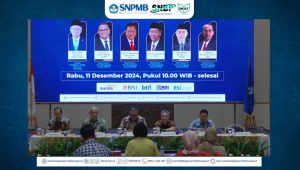Approximately 5,5 million people worldwide died annually due to stroke with the estimation that the global prevalence of stroke will gradually increase to as high as 21.9% by 2030. Stroke in addition to causing pain and death is also the most common cause of disability. In Indonesia stroke is a non-communicable disease that is the leading cause of death in all age groups (15.4%). East Java province occupied the fourth highest prevalence rate in Indonesia. As the prevalence of Stroke in East Java exceeded the average prevalence of stroke in Indonesia.
Stroke (cerebrovascular disease) occurs due to acute and sudden functional brain disorders with clinical signs of focal or global impairment of cerebral function that persists for at least 24 hours, with no other cause than blood vessels. As an acute and sudden clinical syndrome, the sign caused by stroke is persistent paralysis of one side of the body or cognitive disability. Looking at the cause, stroke consists of ischemic stroke and hemorrhagic stroke. The impact of stroke often has on all aspects of life. Stroke not only causes motor disability but more, such as reduced social contact, decreased self-confidence, and post-stroke depression as well as various factors that decrease quality of life. Even up to one year after stroke, the quality of life of post-stroke patients is still not good. This can be known by measuring the quality of life of patients after stroke by using quality of life instruments issued by WHO, the World Health Organization.
Stroke not only leaves physical disability for patients, but stroke also has a large impact in terms of socioeconomic impacts, because of the relatively expensive cost of treatment and decreased productivity in patients due to disability caused. The American Heart Association (AHA) estimated that the economic burden incurred for stroke survivors is $53.6 million, with a direct cost of stroke treatment at $33 million, and indirect costs due to loss of productivity of $20.6 million (WHO, 2014).
Medical rehabilitation is a program that is structured to give the ability to patients who have physical disabilities and or chronic diseases so that they can live or work fully in accordance with their capacity. Activities carried out in medical rehabilitation not only include the recovery of physical health, but aspects of psychosocial recovery are also considered. The rehabilitation activities of post-stroke patients have a lesser possibility of experiencing a worsening in functional ability to perform daily activities and improve the ability of daily activities. Post-stroke patients who have better mobility function are expected to increase activity and participation in the community which will affect improving their quality of life.
The results of this study showed that there is a difference in the quality of life status according to medical rehabilitation. Post-stroke patients who never attended medical rehabilitation had a greater risk of low quality of life compared to post-stroke patients who attended medical rehabilitation. Other studies also stated that with proper rehabilitation, 80% can master (do) self-care activities and 30% can return to work. Similarly, there were significant improvements in terms of physical mobility function and confidence in post-stroke patients who attended medical rehabilitation. Medical rehabilitation is a program that is structured to reduce the impact of disability so that they can live or work fully in accordance with existing capacities, interact and integrate with the community. Rehabilitation programs are not only limited to the recovery of physical conditions but also include rehabilitation that is psychosocial. Medical rehabilitation in stroke patients cannot fix neurological deficits due to stroke but reduce or improve functional and psychological deficits. In general, the success of medical rehabilitation lies in how much patients can do activities independently in self-care or doing work and can do recreation or exercise as before having the illness without requiring help in the form of aids and of course improving the quality of life as the main goal.
Author: Santi Martini
Reference: Assessing quality of life and associated factors in post-stroke patients using the world health organization abbreviated generic quality of life questionnaire (WHOQOL-BREF). https://www.sciencedirect.com/science/article/pii/S2213398421002499









